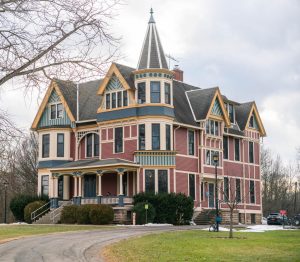City Receives $350,000 Grant to Restore 13 Homes
October 3, 2014
Oberlin, Sheffield Lake and Lorain County recently received $1,150,000 to rehabilitate homes for low to medium-income families. The grant, which was awarded through the State’s Community Housing Impact and Preservation fund, is expected to fund a total of 58 houses, including 15 homes in Lorain County and 13 homes in both Oberlin and Sheffield, according to Don Romancak, Lorain County’s director of community development.
The CHIP fund altered the parameters of its program this year, allowing the partnership between Oberlin, Sheffield and Lorain that secured Oberlin $350,000. For a decade Oberlin had been applying on its own, without the possibility of applying as a partnership, and had been receiving $300,000.
Carrie Handy, an economic development and housing officer for the city of Oberlin, said that she was pleased with this year’s countywide partnership and that she hopes it will benefit Lorain County residents.
“Anytime that we can work together with the county is a good thing,” Handy said. “Over the years they’ve really cut that program back; the CHIP grants used to be $500,000, sometimes $550,000. … You know, little cities who may have felt that they didn’t have the capacity to take on the CHIP grant. Housing rehab is a lot of work, [but] if they can partner with the county it’s a lot more staff.”
Oberlin receives this grant as a community that is considered to have a high percentage of people with low to moderate income. Eligibility for the grant extends to those with moderate income, who make up 50 to 80 percent of Oberlin residents, according to Handy.
In the state of Ohio, Oberlin falls into the Cleveland-Elyria-Mentor region, where low income is defined as between a range of $13,200 at the lowest end of a one-person residence and $66,150 at the low-income maximum of an eight-person residence.
“I would say it’s really open to anyone whose income qualifies within the city,” Hardy said. “A family of four making $30,000 to $40,000 would probably qualify. Eighty percent of the median income for the county is considered ‘moderate income’, so a lot of people qualify. Sometimes they limit it to 50 percent, but it can be up to 80.”
According to Romancak, who divides the awards from CHIP grants between full-rehabilitation projects, each family will be granted up to about $40,000 per house and $6,000 for smaller repairs.
Although CHIP grants can fund a variety of projects — including insulation, rewiring, replacement, structural repairs and lead paint and asbestos removal — even if an application has been accepted, the municipality must “walk away” if the project costs more than the grant covers. This occurs in situations when considerable amounts of asbestos or lead paint must be removed or covered, especially in very old houses, and $40,000 is no longer enough to fund the project. The state’s rehabilitation standards can also force the municipality to walk away because the projects must be thorough enough to meet state qualifications.
Handy said that the process of selecting applicants and determining awards is based on a family’s income, the number of residents and the level of rehabilitation applied for by the family.
“The state has a scoring sheet where they evaluate all of the applications, and the top scorers get the money. Then we, or the county, would give out the money; usually it’s first come, first served. So usually you’re looking at the applications as they come in,” said Handy.
For Ohio State Representative and Lorain Democrat Dan Ramos, the funding allows a financial accessibility that “has long been a staple of America’s strong middle class.”
“These funds will go a long way to ensuring that all residents of Sheffield Lake and Oberlin have a place to call home,” said Ramos in a press release.
According to the State Controlling Board, Lorain County’s CHIP grant will completely renovate 20 homes, or “dwelling units,” for $650,000, fund general repair on 43 units for $345,000 and provide “tenant-based rental assistance” for 21 units for $16,500.
Applications will now be processed at the county level instead of by the Oberlin Development Department. The number of accepted applications will be governed by the amount of money that each application receives out of Oberlin’s total award of $350,000.
Once an application is selected, county administrators will review the requests made by the applicant and provide a list of contractors to do the repairs, which applicants can choose from. Later this month, the county will be holding an open house for contractors to apply to be on this list.
























